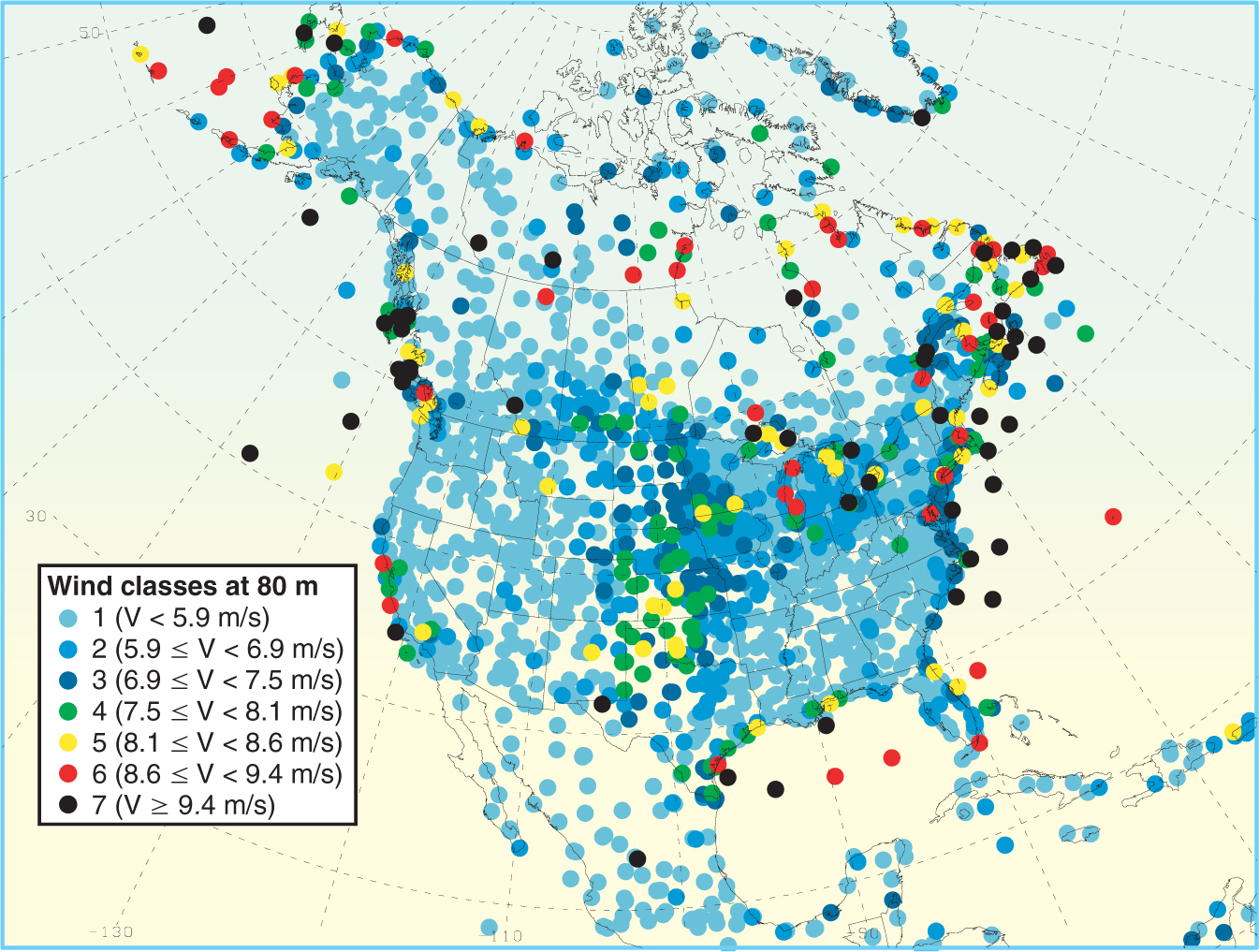World Wind Speeds Suggest Plentiful Energy
DOI: 10.1063/1.2012454
Wind could power the planet. So say Cristina Archer and Mark Jacobson, who recently created a world map of potential wind power.
“Wind is much more widely available than was previously thought. We’d be fools not to use it,” says Archer, Jacobson’s former graduate student at Stanford University and now an atmospheric modeler for the Bay Area Air Quality Management District in San Francisco. For wind power to be cost effective, or comparable with fossil fuels, “you have to have winds faster than 6.9 meters per second,” adds Jacobson. The wind map shows that 13% of all sites considered meet that criterion. “That’s huge,” says Jacobson, “if you converted it to energy, there’s a factor of seven more energy than needed to fulfill all energy demands worldwide.”
To create their wind map, the pair used freely available wind measurements for the year 2000 from 8000 ground stations and 400 sounding stations—that is, balloon launches, which give height profiles—and did least-squares fits to estimate wind speeds 80 m above the ground stations, at the height of modern wind turbines. They compared their estimates with measurements at several towers. “It worked really well,” says Archer. “And the actual value in average is always greater than our estimates. Our results are conservative.” The world’s windiest areas are the Great Lakes region and the northern coasts of North America, along the North Sea in northern Europe, the southern tip of South America, and the Australian island of Tasmania. Archer and Jacobson’s results will appear soon in the Journal of Geophysical Research.
In response to the objection that wind is intermittent, the scientists point to their calculations on linking several wind farms. “This greatly increases the reliability of wind energy,” says Jacobson. To another objection—that wind turbines kill birds and bats—he says, “That’s a red herring! Last year 10 000 birds died from hitting wind turbines in the US. That pales in comparison to the tens of millions that died from transmission lines and buildings.”
At the moment, less than 1% of the world’s electric power is generated by wind; among countries, Denmark derives the highest fraction of its electricity, 20%, from wind power. “From my point of view, we should really try to switch to wind power as much as possible,” says Archer. “It’s an amazing source of energy—it’s free, there’s no fossil fuel involved, why not? I hope our results push the issue a little further.” It’s a cultural and political problem, adds Jacobson. “There are a lot of entrenched interests in coal and fossil fuels.”

Wind speeds (V) measured at sounding stations around the globe were used to estimate values at other sites. For wind speed maps of other regions, see
Journal of Geophy Sical Reseapch (Atmospheres)

More about the Authors
Toni Feder. American Center for Physics, One Physics Ellipse, College Park, Maryland 20740-3842, US . tfeder@aip.org
